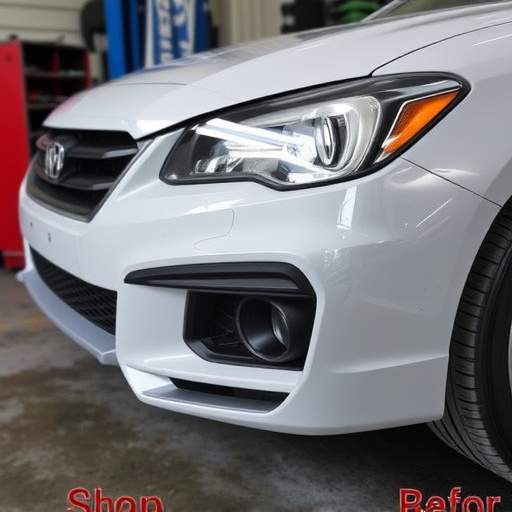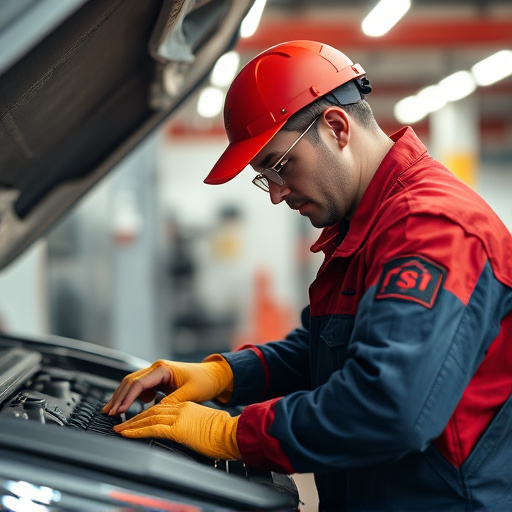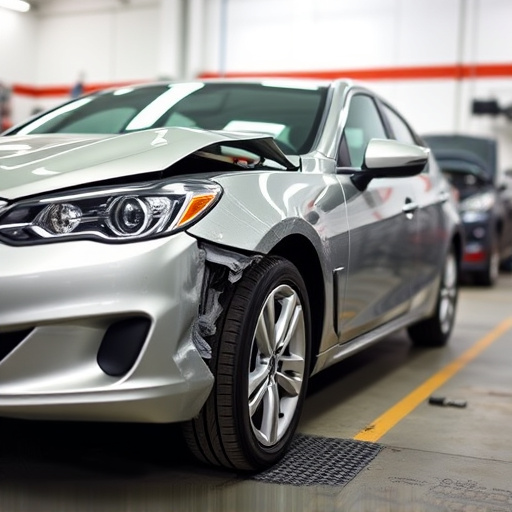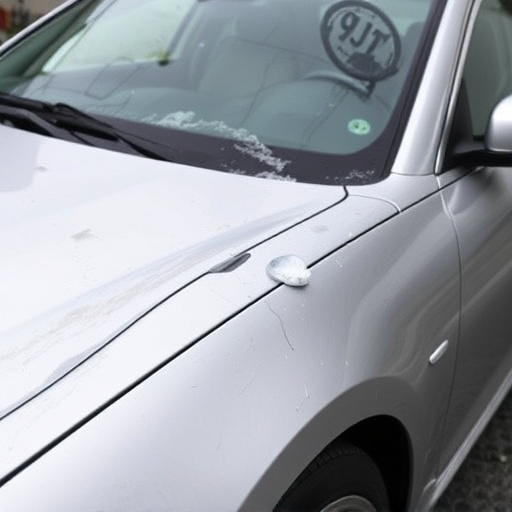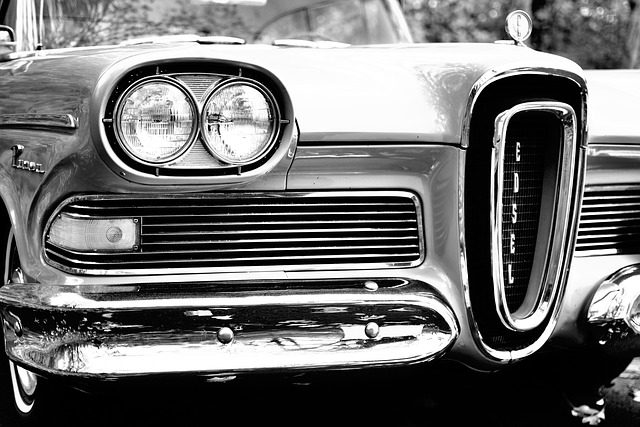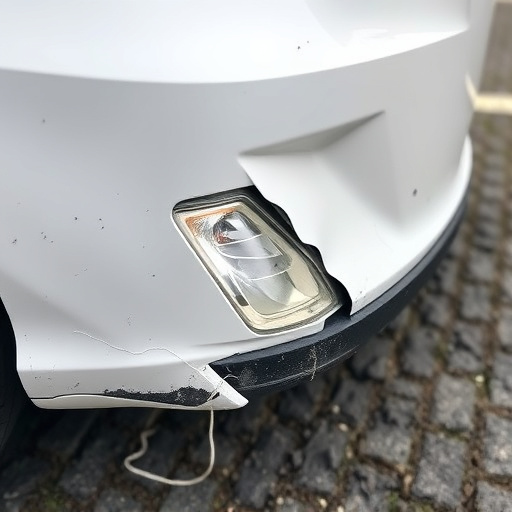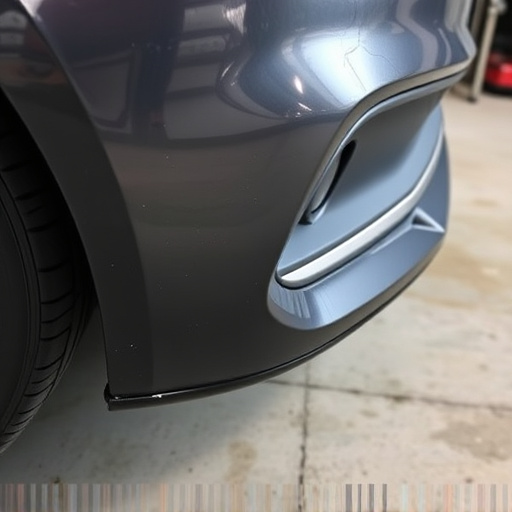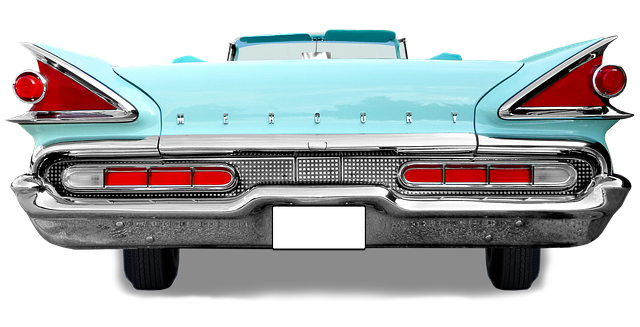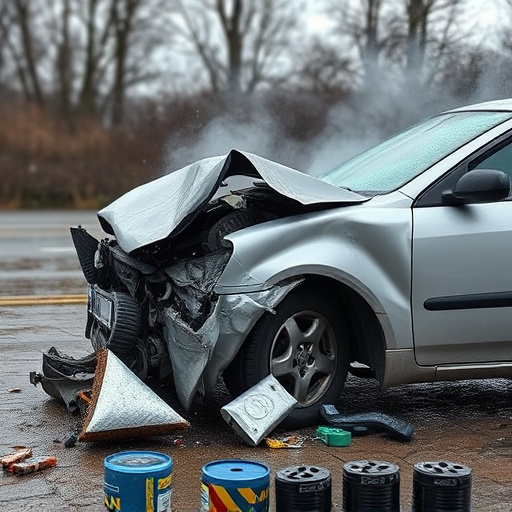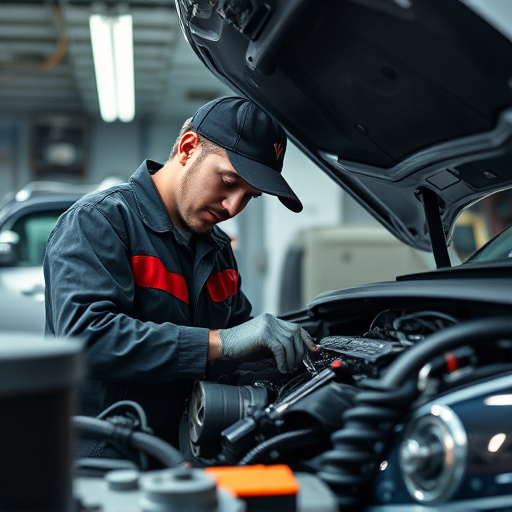After a collision, the exhaust system needs meticulous inspection and potential repair due to its vital role in removing harmful gases from the engine. Vulnerable to damage like deformation, cracks, or separation, this system consists of headers, mufflers, catalytic converters, and pipes. Auto collision centers specialize in exhaust system collision repair, addressing structural issues while ensuring safe and efficient operation crucial for both vehicle performance and environmental compliance. Before repairs, conduct thorough safety checks including visual inspections, noise tests, and component examinations. For extensive damage, consult a qualified shop. Post-collision, look for visible damage, loose connections, corrosion, and rust; minor repairs can be handled at home, but complex issues require professional attention from a reputable collision center offering exhaust system collision repair services.
After a collision, it’s crucial to inspect your vehicle’s exhaust system for potential damage. The exhaust system, while often overlooked, is a vital safety component. Understanding its vulnerable parts and performing regular safety checks can prevent serious hazards. This guide breaks down the process, offering a step-by-step approach to identify issues commonly arising from collisions. Learn how to assess risks and when to seek professional exhaust system collision repair for optimal vehicle safety and performance.
- Understanding Exhaust System Components and Their Vulnerability After a Collision
- Safety Checks to Perform Following Collision Damage: A Step-by-Step Guide
- Common Issues to Look Out For and When to Consider Professional Help for Exhaust System Repair
Understanding Exhaust System Components and Their Vulnerability After a Collision
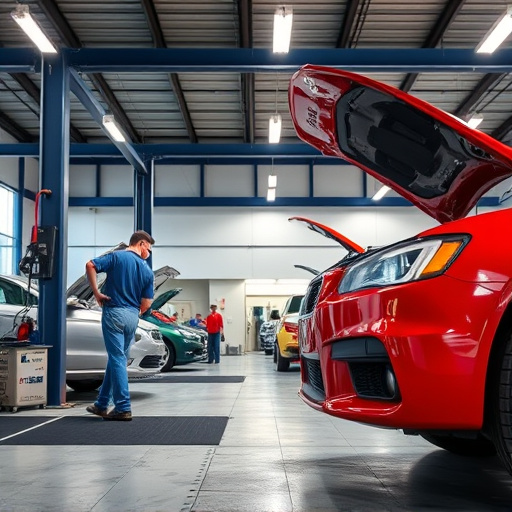
After a collision, the exhaust system is one of the many components that require careful inspection and potential repair. Understanding the various parts that make up this critical system is crucial in identifying vulnerabilities and ensuring safety. The exhaust system plays a vital role in removing harmful gases from the engine, so any damage can have significant implications. It typically consists of several elements such as headers, mufflers, catalytic converters, and pipes, each susceptible to different types of harm during an accident.
When a vehicle is involved in a collision, these components may experience deformation, cracks, or even complete separation. For instance, the exhaust pipes might bend or rupture, while the catalytic converter could be displaced or damaged due to the force exerted during the impact. Auto collision centers specializing in exhaust system collision repair have the expertise to assess and address these issues. They offer auto body services that not only fix structural problems but also guarantee the continued efficient and safe operation of the exhaust system, which is essential for both vehicle performance and environmental considerations.
Safety Checks to Perform Following Collision Damage: A Step-by-Step Guide
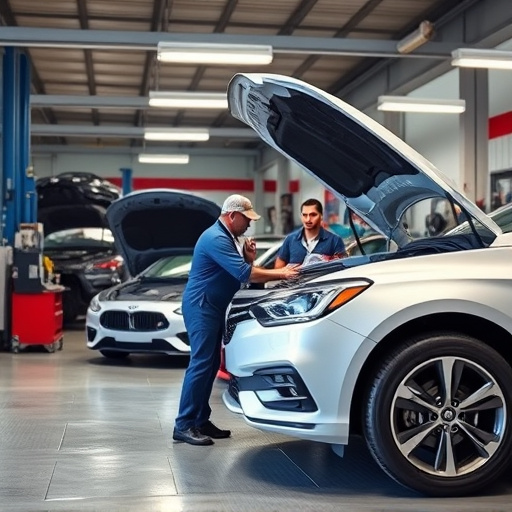
After a collision, conducting thorough safety checks is paramount before addressing any exhaust system collision repair. Begin by inspecting the vehicle for visible damage, focusing on the undercarriage and exhaust components. Look for cracks, leaks, or any signs of deformation that could compromise structural integrity. Next, test drive the vehicle at low speeds to assess unusual noises or vibrations emanating from the exhaust system, indicating potential internal damage.
Follow up with a detailed examination of each component: inspect hangers for swaying or misalignment; verify connections for tightness and leaks; and check gaskets for tears or damage. Remember, proper safety protocols ensure not only the effectiveness of exhaust system collision repair but also prevent further hazards during the repair process. For more extensive damage, such as severe hail damage repair or complex automotive repair, consult a qualified car repair shop for expert assistance.
Common Issues to Look Out For and When to Consider Professional Help for Exhaust System Repair
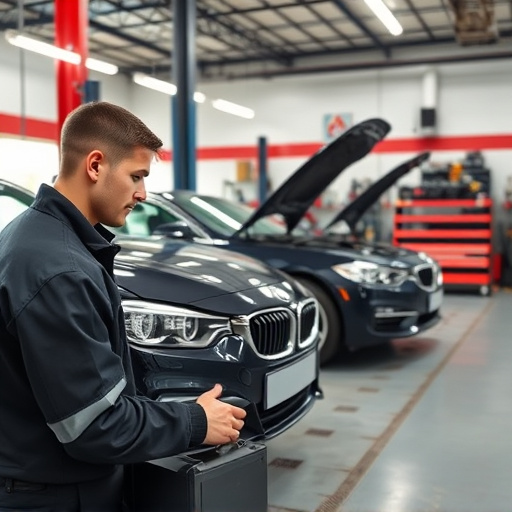
After a collision, it’s crucial to conduct thorough checks on your vehicle’s exhaust system. Common issues to look out for include visible damage such as dents, cracks, or leaks in the pipes and components. Also, inspect for loose connections, corrosion, and any signs of rust, especially in older vehicles. While some minor repairs can be addressed at home, complex issues like significant structural damage, hole formations, or faulty welds often require professional attention.
If you notice strange noises, strong odors, reduced engine performance, or unexpected exhaust leaks post-collision, it’s advisable to seek help from a reputable collision center offering automotive repair services. These professionals have the tools and expertise to diagnose and fix problems related to the exhaust system, ensuring your vehicle is safe to drive. Remember, neglecting exhaust system collision repair can lead to more severe issues, impacting both vehicle performance and safety.
After a vehicle collision, thoroughly inspecting your exhaust system is crucial for both safety and environmental reasons. Understanding the vulnerabilities of its components and performing regular safety checks can help prevent further damage and ensure your vehicle operates efficiently. By following the step-by-step guide provided, you can effectively identify common issues like leaks, cracks, or misalignments. While some minor repairs can be handled yourself, it’s essential to recognize when professional exhaust system collision repair is necessary for more complex damages. Regular maintenance and prompt attention to any concerns will contribute to a safer driving experience and help protect the environment from harmful emissions.

